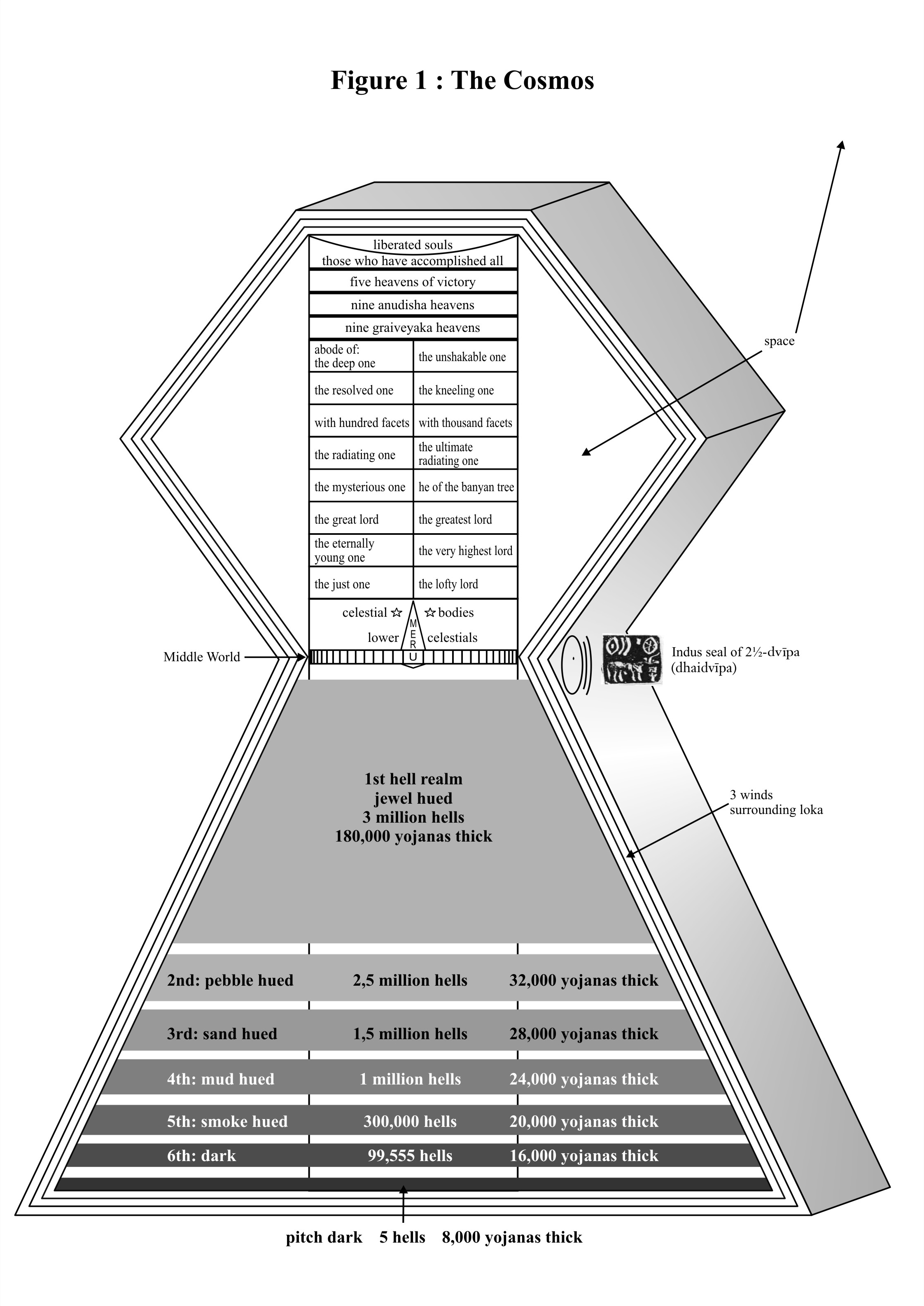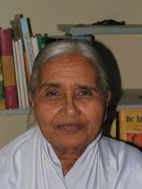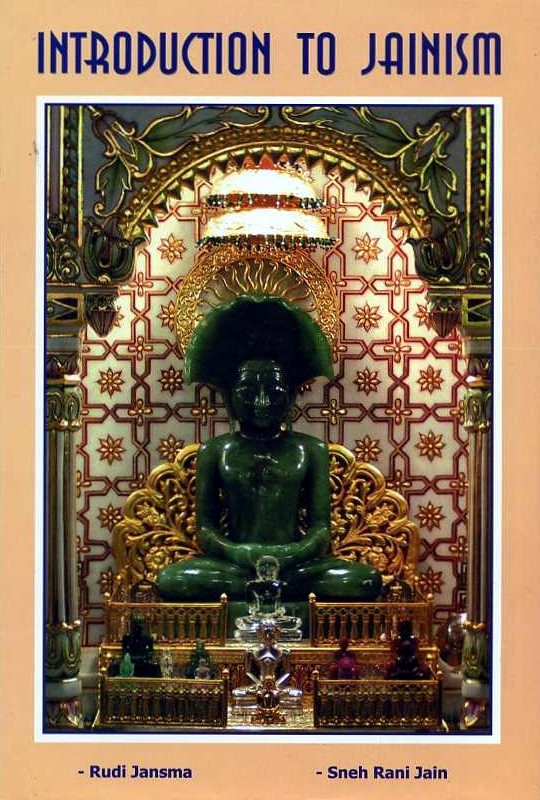The soul in its wanderings
is limited to the knowable universe
Jainism appears to teach a dualistic cosmology. The cosmos is divided in loka and aloka - world and not-world, or universe and not-universe. Within loka is every form of existence. Outside loka is only space (alokākāśa), but soul (= life-consciousness), matter, time, movement and opposition to movement do not exist there. Within loka, the universe or manifested cosmos comprising all existing things, there is a lower or hellish world, a middle world (Madhyaloka) and an upper world where the heavenly or celestial beings live. The lower world consists of seven “earths” (bhūmi), which are depicted as a column of horizontal discs with spaces in between, and which become more and more unpleasant in a downward direction. Within these seven “earths” are seven narakas or infernal realms, which are further subdivided into a total of 8,400,000 hellish locations.
The Middle World is pictured as a horizontal disc without thickness. On a small part of it we live at this moment. Literature, paintings and relief sculptures depict mountains, rivers, lakes, oceans, islands and continents in detail.
Above the higher world is an upper world, which consists of dozens of heavens or paradises. Above the highest heaven, but of course still within loka, the universe, is Siddhaloka - the world of the beings who have entirely shed all karmas and will never return to any lower level of existence within the universe. See Figure 1.[60]

Though Jainism expresses its view on the cosmos in a dualistic way, the deeper and original meaning needs not be dualistic: loka is surrounded by – or exists within – aloka. Thus loka is that aspect of the infinite which can possibly be understood. Even the Jinas live within loka, in which they possess omniscience. This does not necessarily imply that there is “nothing” outside, but only that our knowledge, even if omniscient in loka, can not reach there. Why else would the Jain philosophers have created the concept of “aloka”?
What follows is a summary of the teachings of the Tattvārthadhigama Sūtra on cosmology, interspersed with my own comments.
The English terms used in figure 1 are a translation of: Liberated souls, those who have accomplished all: Siddhaloka. Five heavens of (spiritual) victory: Anuttara. Nine Anudiśa heavens: “Subdirectional” heavens. Nine Graiveyaka heavens: “Neck heavens”: (sometimes a figure of a standing man is drawn around the cosmos; these heavens are at the level of his neck). Below these are the 16 empyrean heavens (kalpopapanna): abode of: 1 the deep one: Ārana; 2 the unshakable one: Achyuta; 3 the resolved one: Ānata; 4 the kneeling one: Prānata; 5 he with a hundred facets: Śatāra; 6 he with a thousand facets: Sahasrara; 7 the radiating one: Śukra; 8 the ultimate radiating one: Mahāśukra; 9 the mysterious one: Lāntara; 10 he of the banyan tree: Kāpishtha; 11 the great lord: Brahmā; 12 the greatest lord: Brahmottara; 13 the eternally young one: Sanatkumāra; 14 the very highest lord: Mahendra; 15 the just one: Saudharma; 16 the lofty lord: Iśāna. Below these 16 follow: Celestial bodies: Jyotishka; lower celestials: Bhavanavasi and Vyantara.
 Dr. Sneh Rani Jain
Dr. Sneh Rani Jain
 Publisher:
Publisher: